Appellation
An appellation is a legally defined and protected geographical indication used to identify where the grapes for a wine were grown; other types of food often have appellations as well. Restrictions other than geographical boundaries, such as what grapes may be grown, maximum grape yields, alcohol level, and other quality factors, may also apply before an appellation name may legally appear on a wine bottle label. The rules that govern appellations are dependent on the country in which the wine was produced.
History
The tradition of wine appellation is very old. The oldest references are to be found in the Bible, where wine of Samaria, wine of Carmel, wine of Jezreel,[1] or wine of Helbon[2] are mentioned. This tradition of appellation continued throughout the Antiquity and the Middle Ages, though without any officially sanctioned rules. Historically, the world's first exclusive (protected) vineyard zone was introduced in Chianti, Italy in 1716 and the first wine classification system in Tokaj-Hegyalja, Hungary, in 1730.
Europe
France
In 1935, the Institut National des Appellations d'Origine (INAO), a branch of the French Ministry of Agriculture, was created to manage wine-processing in France. In the Rhone wine region Baron Pierre Le Roy Boiseaumarié, a lawyer and winegrower from Châteauneuf-du-Pape, obtained legal recognition of the Côtes du Rhône appellation of origin in 1937. The AOC seal, or Appellation d'Origine Contrôlée, was created and mandated by French laws in the 1950s, 1960s, and 1970s.
Before 1935, despite the fact that the INAO was yet to be created, champagne enjoyed an appellation control by virtue of legal protection as part of the Treaty of Madrid. The treaty stated that only sparkling wine produced in Champagne and adhering to the standards defined for that name as an Appellation d'Origine Contrôlée could be called champagne. This right was reaffirmed in the Treaty of Versailles after World War I.
Germany
Germany is unusual among wine-producing countries in that its most prestigious classifications, the various grades of Prädikatswein, are based on the ripeness of the grapes, though their geographical origins are also legally defined. Thus Germany's geographical classification, Qualitätswein bestimmter Anbaugebiete (QbA), is akin to France's defunct Vin Délimité de Qualité Superieure, which has been subsumed into the current Appellation d'Origine Contrôlée system.
Georgia
Georgia has nineteen registered wine appellations.
Hungary
Historically, the world's first vineyard classification system was introduced in Tokaj-Hegyalja, Hungary, in 1730. Vineyards were classified into three categories depending on the soil, sun exposure, and potential to develop Botrytis cinerea. The subdivisions were: first-class, second-class and third-class wines. A decree by the Habsburg crown in 1757 established a closed production district in Tokaj. The classification system was completed by the national censuses of 1765 and 1772.
Italy
Italy's first origin classification system was introduced in Tuscany in 1716 for delimiting Chianti production. After the unification of Italy several attempts were made to introduce some kind of protection for wine appellations, to no avail. Only in 1963 the "Denominazione di origine controllata" law was approved, starting with 1967 vintage.
Portugal
The world's third-oldest appellation control, after Chianti and Tokaj was introduced in Portugal in 1756, pertaining to port wine, which was produced in the region of the Douro valley.
Spain
Some Spanish wines were already famous or even regulated (Rioja: 1925; Sherry: 1933) when the market started being regulated. It was not until 1980 that legislation on denominación de origen was stablished, following the French scheme with more tiers of classification and prompted by the impending accession to the European Union.
North America
Canada
Canadian wine appellations are regulated by the Vintners Quality Alliance system. The system covers the provinces of British Columbia and Ontario.
British Columbia is divided into four "Designated Viticultural Areas" ("DVAs"): Okanagan Valley, Vancouver Island, Fraser Valley, and the Similkameen Valley. Ontario includes three DVAs: Niagara Peninsula, Lake Erie North Shore, and Prince Edward County.[3]
On June 11, 2012, Nova Scotia launched its first appellation, Tidal Bay.
United States
The American Viticultural Area ("AVA") is for the United States. The only requirement to use an AVA name on the wine label is that 85% of the wine must have come from grapes grown within the geographical AVA boundaries. The first AVA was in Augusta, Missouri, in 1980. The approval of the Augusta AVA was based largely on its long historical relationship with wine in the United States.[4] The Augusta wine-growing area is a 15-square-mile (39 km2) plot of land along the Missouri River, which moderates temperature and provides an appropriate climate for growing grapes.
States or counties can also be used in lieu of an AVA to designate the origin of a wine, provided that 75% of the grapes used in the wine are grown in the state or county listed on the label.
List of appellations
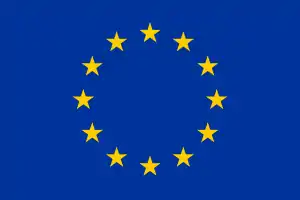 European Union: Protected Designation of Origin
European Union: Protected Designation of Origin
 Austria: Districtus Austriae Controllatus
Austria: Districtus Austriae Controllatus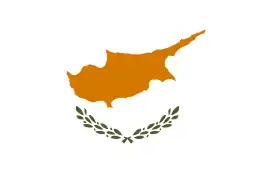 Cyprus: Ελεγχόμενη Ονομασία Προέλευσης
Cyprus: Ελεγχόμενη Ονομασία Προέλευσης France: Appellation d'origine contrôlée
France: Appellation d'origine contrôlée Germany: German wine classification
Germany: German wine classification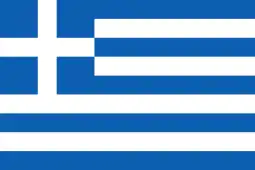 Greece: ονομασία προελεύσεως ελεγχομένη
Greece: ονομασία προελεύσεως ελεγχομένη Italy: Denominazione di Origine Controllata
Italy: Denominazione di Origine Controllata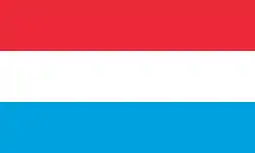 Luxembourg: Appellation contrôlée
Luxembourg: Appellation contrôlée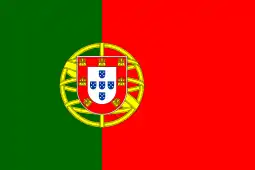 Portugal: Denominação de Origem Controlada
Portugal: Denominação de Origem Controlada Romania: Denumire de Origine Controlată[5]
Romania: Denumire de Origine Controlată[5]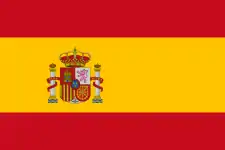 Spain: Denominación de origen protegida
Spain: Denominación de origen protegida
 Switzerland: Appellation d'origine contrôlée
Switzerland: Appellation d'origine contrôlée.svg.png.webp) Australia: Australian Geographical Indications[6]
Australia: Australian Geographical Indications[6]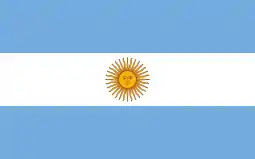 Argentina: Denominación de origen - see also:Argentine wine
Argentina: Denominación de origen - see also:Argentine wine.svg.png.webp) Canada: Vintners Quality Alliance
Canada: Vintners Quality Alliance Brazil: Denominação de Origem
Brazil: Denominação de Origem Chile: see Chilean wine
Chile: see Chilean wine South Africa: Wine of Origin
South Africa: Wine of Origin United Kingdom: Protected Denomination of Origin
United Kingdom: Protected Denomination of Origin United States: American Viticultural Area
United States: American Viticultural Area
See also
- Protected Designation of Origin
- Terroir
Notes and references
- Geoffrey W. Bromiley, International Standard Bible Encyclopedia, Wm. B. Eerdmans Publishing, 1995, ISBN 0-8028-3784-0, ISBN 978-0-8028-3784-4
- Ezekiel 27:18 Damascus was your merchant for the multitude of your handiworks, by reason of the multitude of all kinds of riches, with the wine of Helbon, and white wool
- "VQA Ontario · the Appellations · Overview".
- "America's first appellation - Augusta".
- "ONDOV". 7 August 2004. Archived from the original on 7 August 2004. Retrieved 4 May 2018.
- "Archived copy". Archived from the original on 2006-04-22. Retrieved 2006-03-11.CS1 maint: archived copy as title (link) Australian Geographical Indications
External links
| Look up appellation in Wiktionary, the free dictionary. |
- Appellation America Wine Portal. Information about recognized wine appellations in the United States and Canada.